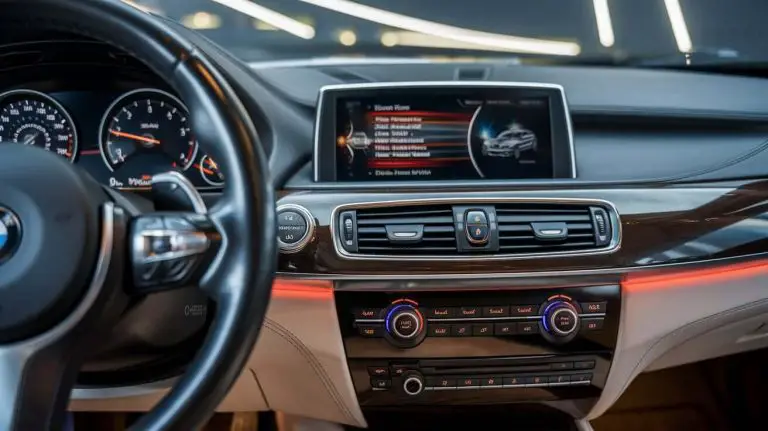MINI Cooper and BMW: How a British Icon Found New Life?
The MINI Cooper is a cultural icon on British roads and racing circuits. Its origins date back to 1959 when the compact Minivehicle revolutionized small car design with its transverse engine and front-wheel drive layout. After multiple ownerships, BMW acquired the MINI brand in 1994, leading to a remarkable rebirth story.
Despite BMW’s ownership, MINI has retained its quintessential British spirit while benefiting enormously from the German automaker’s engineering and manufacturing prowess. This improbable automotive relationship gave new life to the MINI Cooper.
The Humble Beginning of a British Racing Legend
The roots of the MINI lie in the aftermath of the Suez Crisis fuel shortage. Sir Alec Issigonis designed an innovative compact car, and the Mini went into production in 1959 under the British Motor Corporation (BMC).
With its 10-inch wheels, front-wheel drive, and famous sideways-mounted engine, the classic Mini won the hearts of motorists. The Italian Job movie cemented its cult status as a zippy and agile urban runabout.
On the track, John Cooper who gave us the Mini Cooper tuning package, turned the humble Mini into a giant-killing race car. It won the legendary Monte Carlo rally thrice in the 1960s.
Unfortunately, BMC’s successor companies failed to keep the Mini relevant in an evolving auto market through the 1970s and 80s. The brand languished under British Leyland and subsequently the Rover Group.
By the 1990s, the classic Mini was clearly outdated but still retained cult appeal due to its unique character and racing pedigree.
BMW saw beyond the rust and recognized this diamond-in-the-rough for what it was – one of the greatest automotive icons of the 20th century.
New Lease of Life Under BMW’s Wing in the 21st Century
In 1994, BMW acquired Rover Group, and with it the Mini brand. But it would take another seven years before launching the contemporary MINI in 2001.
Heavily investing in the MINI brand, BMW built an entirely new production facility in Oxford, UK on the grounds of the historic Morris Motors site where Minis were previously assembled.
The new MINI Cooper now featured BMW engineering updates including:
- A stiffer body and wider track for agile handling
- Powerful turbocharged BMW petrol engines
- Options for sporty John Cooper Works (JCW) performance tuning
- Latest safety tech and infotainment features
Despite the technical improvements, BMW was careful to preserve the quintessential character of the MINI Cooper – its spirited driving dynamics and cute retro-modern styling.
Why MINI Under BMW Retains its British Roots
Despite being German-owned, MINI pays homage to its heritage with United Kingdom-based production facilities and design elements.
Manufacturing: The main MINI production plant remains in Oxford, UK. BMW has invested over £2 billion in the Oxford facility which produces up to 1,000 cars a day. Additional plants in the Netherlands cater to global demand with local market customizations.
Brand Identity: The MINI logo itself incorporates the iconic Union Jack in its design. MINI has also retained its original 60-year old badge design from the BMC era. The connection with British motorsport royalty is highlighted by special edition MINI Coopers named after racing legend John Cooper.
Ultimately, BMW struck a fine balance between revamping what was under the MINI’s hood while letting it retain its free-spirited British soul.
The Best of Both Worlds: German Engineering Meets British Charm
BMW ownership enabled the MINI brand to leverage the best of British heritage and German technology. This created positive outcomes for innovation, sales growth and global reach.
1. Investing in Innovation
Backed by BMW’s resources, the relaunched MINI range rapidly expanded from just the classic Cooper hardtop to encompass:
- Cooper Convertible (2005)
- Clubman wagon (2007)
- Countryman crossover SUV (2010)
- Paceman coupe (2011)
- John Cooper Works performance editions
The latest MINI models also pioneer green mobility with the MINI Electric and the Countryman plug-in hybrid (PHEV). BMW’s tech has enhanced performance markedly across succeeding MINI generations.
2. Healthy Growth Trajectory
Under BMW’s stewardship, MINI sales grew steadily from about 200,000 units in 2010 to over 302,000 vehicles sold globally in 2021. From a single automotive plant in Oxford, UK – MINI now has additional facilities in born, Netherlands and China.
3. Globalizing British Motoring Icon
BMW has rapidly grown MINI’s presence beyond its native UK market to Europe, North America, and Asia Pacific. Once associated with Britain, MINI achieved record combined sales of over 302,000 units globally in 2021. BMW’s expansion makes MINI the world’s highest selling British automotive brand.
Far from diluting MINI’s Britishness, BMW amplified it. MINI is now experienced as a fun, lifestyle brand infused with classic British motoring nostalgia – winning fans even in Germany and beyond!
Conclusion: A Fruitful Automotive Alliance
BMW buying MINI surprised critics who expected the German giant to swallow Britain’s beloved little car brand. Instead, BMW nurtured MINI to excel by synergizing engineering with emotion.
Contrary to expectations of a complete takeover:
- MINI production remains in Britain allowing retention of brand heritage
- Distinct MINI logo and styling maintains its identity
- Investment in new models expanded customer choice
- BMW engine and tech upgrades enhanced driving experience
- Widened global presence boosted MINI sales exponentially
Far from destroying MINI, the custodianship of its German parent gave this iconic British Mini a new lease of vibrant life in the 21st century – with more chapters yet to be written!
What are your thoughts on BMW’s ownership of MINI? How well has it balanced reviving the legendary brand while retaining its British soul? Share your views in the comments!







